-1976 Painting by “Peter Doige”-
Visual Image Protection: A federal judge in Chicago found in favor of noted painter, Peter Doig, that he was NOT the painter of a 1976 painting of a desert landscape. The plaintiff in the case, Robert Fletcher, a retired correctional officer at the Thunder Bay prison in Canada, claimed that he had bought the painting 40 years ago from one of his parolees for $100. The parolee’s name was Peter Doige, spelled with an “e”; the young artist was Scottish and, after prison, studied art at Lakeland University not far from the prison.
Peter Doig is a world famous Scottish artist who also has painted eery and desolate landscapes. A recent painting sold for over 25 million dollars. When Fletcher learned that who he believed was his 1976 parolee had gone on to fame and fortune, he decided to cash out the millions. The famous painter denied he had painted it. That’s when Fletcher sued in Chicago where his auctioneer was located; the pre-lawsuit denial caused the value to plummet from millions to virtually nothing.
Although Doig too had lived in Canada at the time, he was only sixteen years old and had never been to Thunder Bay, much less been incarcerated in the prison there. In the course of the trial, Doig’s attorneys were able to identify a Canadian carpenter, now deceased, whose name was Peter Doige, who had studied art at Lakeland University after serving time at Thunder Bay. At trial Doig’s attorneys brought in the sister of the deceased who testified why she had reason to believe it was her brother’s painting.
We know artists sometimes need to sue for copyright infringement when someone copies their work. But since when do artists need to go to court to prove that they are not the artist?
First of all, it’s by no means unprecedented that an artist would deny he is the artist. Sometimes the denial is not true. Picasso denied he was the artist of early paintings, notably “Erotic scene” aka “Le Doleur,” which has since been proven to be his. Gilbert Stuart denied painting the version of his portrait of George Washington that is in the White House.
When an artist says it is not his or hers, that’s usually the last word, unless someone steps forward with proof to the contrary. What’s unusual here is that the artist was sued for his simply denying it was his. If anyone is supposed to sue under these circumstances, it’s the artist, invoking his “moral rights,” a subspecies of copyright law under 17 U.S.C. Section 106A, the Visual Artists’ Rights Act, or “VARA.” Since a noted artist’s reputation and legacy are coextensive with the integrity of his or her body of work, moral rights give artists the ability to prevent someone from damaging that reputation by destroying or mutilating originals created by them. Among other things, the law also gives artists the right “to prevent the use of his or her name as the author of any work of visual art that he or she did not create.”
Although not clear from reports, it appears that Doig was sued simply for “tortious interference” with Fletcher’s prospective business advantage, Doig having made an allegedly false statement that the work was not his. It does not appear that Doig counterclaimed for threatened or actual violation of his moral rights had the painting been listed for sale as one produced by Doig. It may be that there was simply little to be gained for the very wealthy Doig to sue a retired Canadian correctional officer for all that he had.
What alternative did Doig have? Hindsight is 20/20. Perhaps with a do-over Doig should have waited until the auctioneer listed the painting as a Peter Doig. Then Doig could have sued under VARA and for false advertising. Importantly, Doig’s denial of authorship in his complaint would have been an absolutely privileged “communication” (see, e.g., Calif. Civil Code Section 47(b) and corresponding laws elsewhere), meaning that his denial in court papers could not be used as a basis for a damages claim for interference or any other claim. That may have led to a different and cheaper path to the truth, e.g., forcing an investigation to be conducted that could have revealed the other Peter Doige while taking the case out of the expensive court system where Fletcher would have had very limited financial incentives to pursue it.


